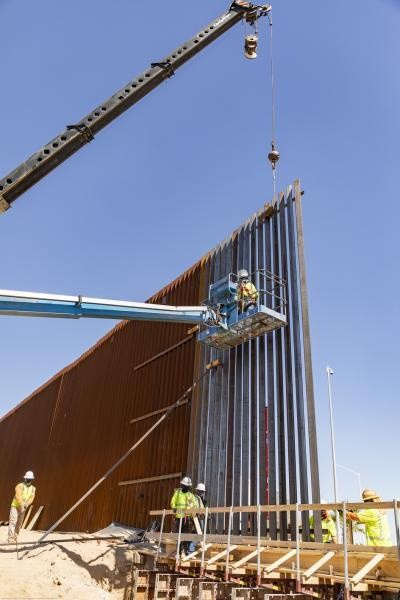
A 30-foot steel border fence slated to be erected between Rio Grande City, Texas and the Rio Grande river threatens the safety of its residents. It creates the possibility of worse floods, taken from prior experience building walls between communities and waterways. When heavy rains fall on communities near moving bodies of water like streams and rivers, the rainwater drains downwards and collects into an area called a floodplain. As the name suggests, the floodplain makes riverside communities prone to flooding. The floodwater brings along trash and debris as it flows. When an obstruction such as a border wall is present, the debris effectively blocks out water from reaching the river and instead makes its way to streets and alleyways causing flooding. Not only would the Texas side of the border be affected by the flooding, but also the riverside as well.
The past fifteen years of the Customs and Border Protection (CBP) building fences between the border of the U.S. and Mexico have shown how flooding has worsened in these areas. Researchers have also noted how these borders have affected the natural ecosystem, especially in an area as biodiverse as the Lower Rio Grande Valley where the river is located. As a result, not only would human settlements be affected by the border wall, but also the local fauna and flora as its erection would disrupt the natural order.
The city has had plans to build a border wall back in 2008, yet plans were shelved because of the flooding to be expected. The plan was revived, however as a result of the Trump administration's drive to deter illegal immigration to the United States, with this particular city having a high influx of border crossers. The Democratic Representative of Texas Henry Cuellar sought a deal with the CBP to have consultations with the residents to assure a more transparent process. Yet it seems as if the CBP is building the wall to please Trump rather than the people living alongside the border, according to Scott Nicol, co-chair of the Sierra Club's Borderlands campaign, seeking more holistic solutions to the border problem.
The Rio Grande River cannot be bordered with walls, as the river's tendency is to overflow and deposit sediment on the top of the floodplain, according to Adriana Martinez from Southern Illinois University in an interview with Scientific American. A 1970 treaty on building structures near the Rio Grande exists between the two countries to avoid deflection or obstruction of the river. The International Boundary and Water Commission (IBWC) ensures that both countries commit to the treaty. In 2008, the IBWC warned the CBP that the Rio Grande river border wall could worsen flooding on the Mexico side of the border, to which the CBP as a result shelved the project.
Consultations between the CBP and the local government are still ongoing, with proposals such as a surveillance alternative by the Rio Grande City government and a wall that would be built closer to the river to avoid hitting popular bike and hike trails, both to no avail. What is assured, however, is that a structure of some kind will be built at the border. And according to an interview with Freddie Guerra, the assistant city manager of Roma, Texas, residents are focused on "getting a structure we can live with."
© 2025 ScienceTimes.com All rights reserved. Do not reproduce without permission. The window to the world of Science Times.












